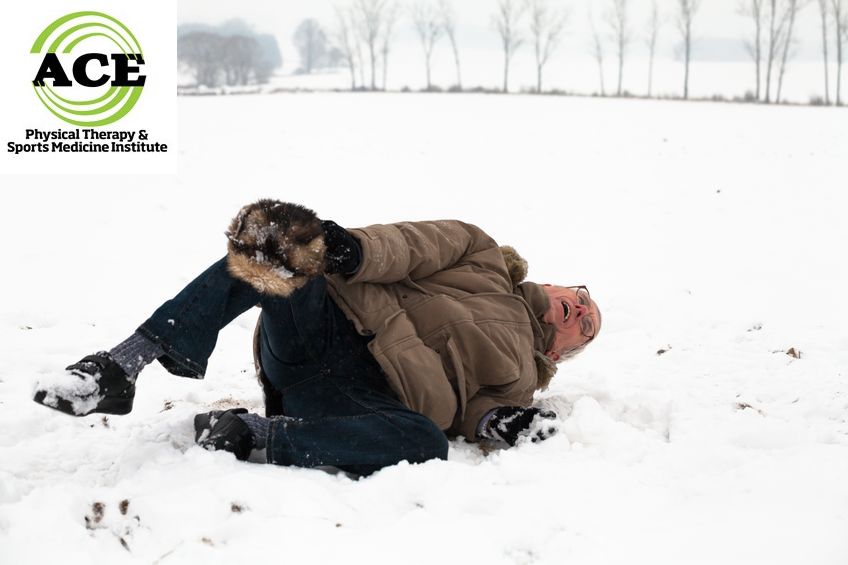SAFELY SURVIVING A FALL

Tid Bits of Info
- An elderly person falls every 11 seconds.
- The estimated medical costs associated with falls is > 34 billion.
- 800,000 hospital visits per year are linked to fall-related events.
- Nearly all hip fractures are related to falls.
- Seek the advice of a Physical Therapist to learn how to avoid a fall or be treated for injuries sustained during a fall.
A fall happens in an instant. Suddenly, the person has tripped, slipped or stumbled and ended up on the ground. It can happen to anyone. After a fall, we may be sore or bruised, but injuries can also be severe. Some fall-related injuries may force us to adjust our lifestyle as we recover. In other cases, people lose time from work, and the most critical cases can lead to death. The mortality rate for an elderly person that suffers a broken hip from a fall can be as high 75%. There are practical techniques that can help reduce the likelihood of falling and lessen the severity of a fall.
Falling usually occurs when we are not ready and prepared to hit the ground. Many times people are not paying attention or are distracted and step incorrectly and lose their balance. Lack of strength, sensation or just bad luck can be the cause of the fall.
The person falling to the ground might be able to protect themselves if they are able to land properly. There are many techniques that can be employed to prevent a disaster from occurring when someone falls. The techniques include, rolling, curling up in the fetal position, absorbing the impact with the elbows and not wrists, rolling and slapping an arm to the ground, relaxing completely, and squatting down prior to hitting the ground.
All of these techniques have been shown to be a reliable way to reduce the impact force that occurs when someone falls to the ground, but usually the research has been conducted on subjects less than 50 years old. While falls can occur in anyone of any age, but they can be extremely devastating in the elderly population.
Learning these techniques can sometimes be challenging particular for elderly people. The elderly are usually less flexible, weaker and don’t have the balance or neuromuscular control that a younger individual has in most cases. This makes the elderly more susceptible to falling and suffering the consequences of the fall. The lack of physical attributes in the elderly or poorly conditioned individuals makes it more difficult to “recover” should they stumble or trip during their travels. Many times the “built-in” neurological controls and safeguards that the human body has are not able to engage forcefully or quickly enough to prevent the fall. Therefore, it is essential that these people are taught landing strategies that might help them prevent a disastrous result of a fall.
Physical Therapists are able to help someone learn how to land when they fall. The Therapist will help their patient gain strength, neuromuscular control, and flexibility which will aide them in their quest to learn a landing technique that will protect them from injury. Physical Therapists can address any physical deficit that predisposes someone to be a fall risk. They can physically teach someone how to land if they are unlucky enough to fall.

























